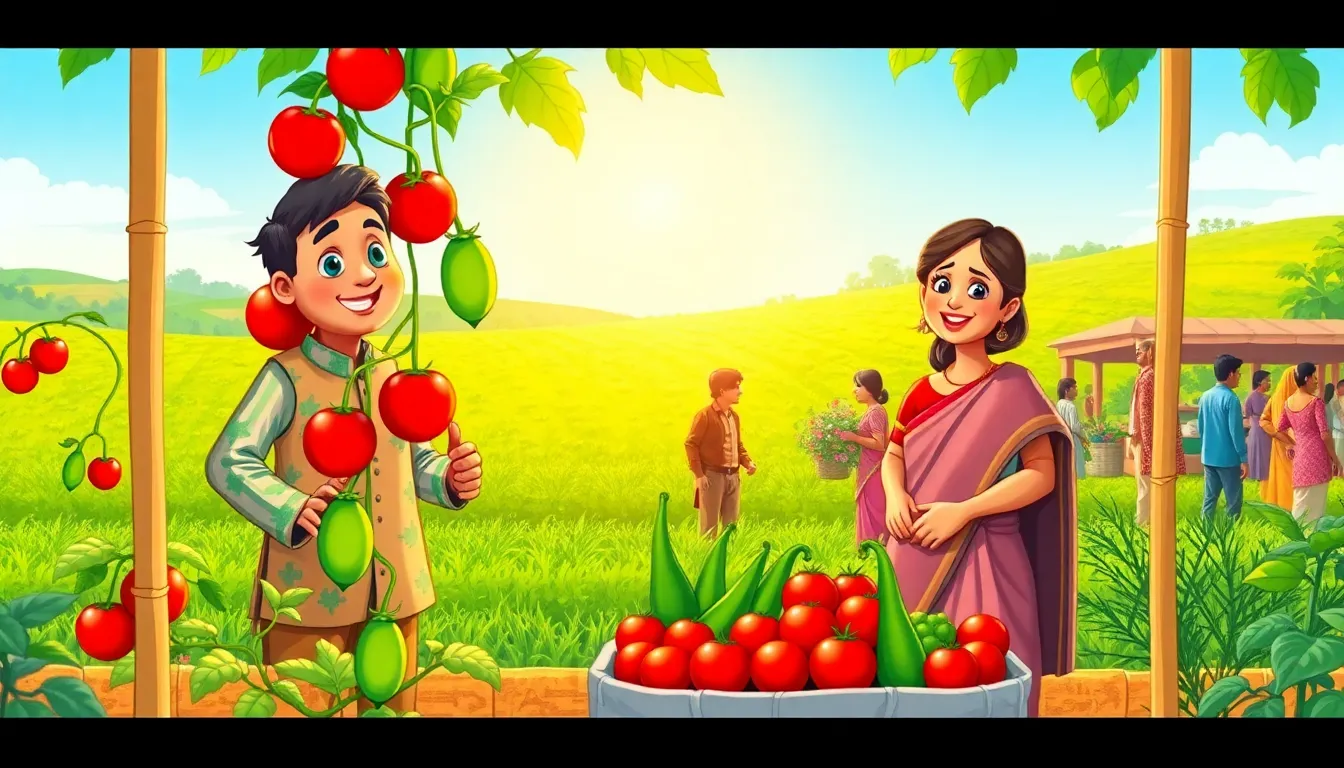As Indian agriculture evolves, farmers are looking for efficient ways to grow crops. One innovative method gaining popularity is scaffolding farming. This technique is particularly useful for vine vegetables. It allows farmers to grow crops vertically, saving space and improving yields. This is crucial for small and marginal farmers who often work on limited land.
Kala and Archana, two farmers from Chandpura village in Mahoba district, have embraced scaffolding farming. They were struggling with traditional methods, which resulted in poor crop quality and low market prices. Under a project supported by the Azim Premji Philanthropic Initiative, they attended a training session on scaffolding farming. They learned how to set up scaffolding using bamboo poles and wires.
After implementing this technique, both farmers saw remarkable improvements. Kala used to harvest only 3 to 4 kg of tomatoes per plant, but now she gets 7 to 8 kg. The old method often caused her tomatoes to spoil when they touched the wet ground. With scaffolding, her tomatoes remain fresh and she now earns better prices in the market. This change has positively impacted her family’s living conditions.
Archana’s experience is equally inspiring. Previously, she harvested 8 to 10 kg of sponge gourd daily. Now, she collects between 20 to 25 kg. The traditional method required more water and time for irrigation, which affected her crop quality and profits. With scaffolding, her sponge gourd not only yields more but also has better quality, allowing her to sell it for higher prices. To boost her crops, she also used ghanjivamrit fertilizer, which further increased her yield.
Both women have expressed their gratitude for the training, as it has significantly improved their livelihoods. Scaffolding farming not only enhances crop yield but also promotes better use of resources. This method reduces the need for vast land areas, which is vital in a country where many farmers struggle with limited space.
The success of scaffolding farming highlights the importance of adopting innovative agricultural practices. Small-scale farmers like Kala and Archana can benefit greatly from such techniques. As more farmers learn about scaffolding, we can expect to see an increase in productivity across various crops.
In addition to improving yields, scaffolding farming helps in pest and disease management. By elevating crops off the ground, farmers can reduce the risk of soil-borne diseases and pests. This leads to healthier plants and potentially lower reliance on chemical pesticides.
Moreover, this method is adaptable to different types of crops. Farmers can use scaffolding for cucumbers, beans, and other vine crops, making it a versatile solution for diverse agricultural needs. As farmers share their success stories, more are likely to adopt this approach.
In conclusion, scaffolding farming is a promising technique that can help transform Indian agriculture. By enhancing yields and improving crop quality, it empowers farmers to achieve better economic outcomes. With continued support and training, more farmers can make the shift to this innovative method, paving the way for a more productive agricultural future in India.

